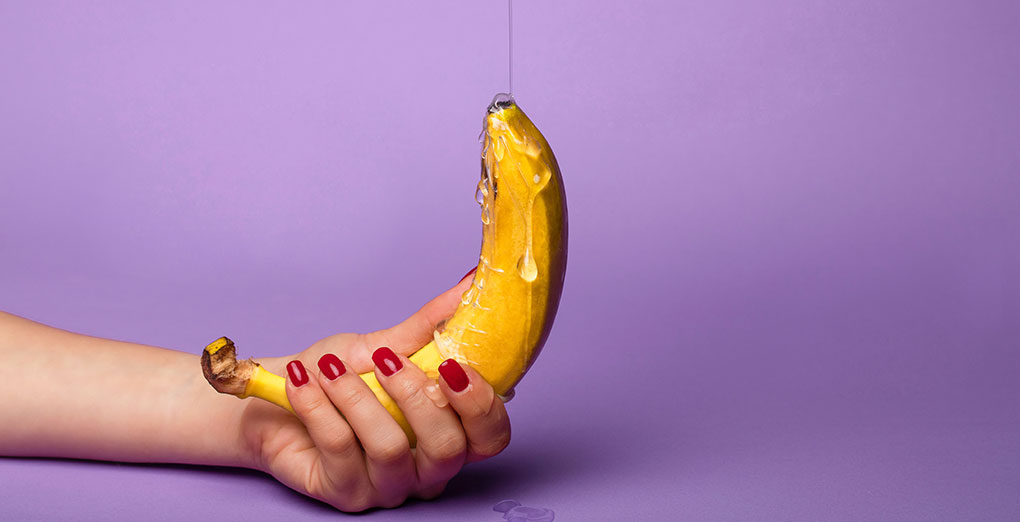Lubricant is one of the great unsung sexual accessories. Using a lubricant makes every kind of sex play slicker and often more sensitive. Unless what you like is a lot of dry friction (and there’s nothing wrong with that, as long as you don’t rub yourself too raw, and take a few preventative steps to avoid annoying infections) you’ll probably find that sex with lubricant is an experience you want to replicate.
Using lubricant isn’t difficult, but there are a few things to know about how to use lubricant for maximum pleasure. Here’s How:
Start with the right lubricant
Using lubricant is the easy part, choosing the right lubricant is the real challenge. If you’re prone to yeast infections, have sensitive skin, or are concerned about chemicals in products you use on your body, you’ll want to make sure you choose a lubricant that fits your needs. Thicker lubricants are easier for use with sex toys and anal play, and you can’t use silicone lubricants on silicone toys. If you’re not sure where to start, shop at a trusted sex shop, buy a small bottle or sample packs, and test on your wrists and inner thighs first.
Get wet on your own first
If it’s your first time with lubricant, take some time when you’re alone and won’t be interrupted and experiment. Fumbling in the dark in the middle of sex can be fun, but you’ll probably get more out of it, and feel more comfortable if you’d experimented with ways of applying lubricant, how much to apply, when to re-apply, etc… If you’re worried about messing up the first time, put a big towel down, tear off the safety seal, and let it slide.
The first application
If you can, start out by just using a little bit of lube. If you’re using your fingers and hands, put a small amount (maybe the size of a smallish coin) on your fingers or in the palm of your hand. Now touch your genitals with the lubricant. Pay attention to how this feels different than touching without lubricant. Is it colder? Wetter? Do you feel it more in one area than another? See how long you can touch yourself before the lubricant changes in consistency (this is more for water based lubricants which dry up during use).
It goes on everything
When you’re using lubricant you should put some on your own body and some on anything else you’re using. Lubricant goes on fingers, on sex toys, on your partner’s body parts that will be rubbing with your body parts. Only putting lubricant on one side of the sex will work, but not as well as if everyone and everything has a little bit of lubricant on it. If you’re using lubricant for intercourse, go ahead and put some lubricant inside yourself as well as outside. This is essential for anal intercourse, but pleasing and helpful for vaginal intercourse as well.
Too much of a good thing
Every lubricant and every individual will require different amounts for the best use. With some water based lubricants you can put too much on, making it sticky right away. The only way to know how much is too much is to experiment. Again, playing alone first can be a good way to do this, but you can also check in with a partner after the fact.
When the lubricant dries
During use water based lubricants dry up. Instead of reapplying more lubricant when this happens, you can usually just apply some water (or saliva, but it’s less effective) to reinvigorate the lubricant that’s still on your body. Some people have a spray bottle by the bed and add a few spritzes of water when the lubricant dries up (this can also be a fun and funny thing to do during sex). Silicone lubricants don’t dry up in the same way as water based lubricants, in fact you need soap and water to stop feeling quite so slick once you’ve applied most silicone lubricants.
Check the expiration date
Lubricant does expire, and your lubricant should have an expiry date on it. The expiry date refers to the shelf life of the lubricant unopened. With water based lubricants once you open a bottle it will start to lose its effectiveness, and if you don’t remember to close the cap securely it will evaporate over time. Most lubricants have antibacterial ingredients, and if they have lost their effectiveness it’s conceivable that using an old lubricant could result in an infection. When in doubt, smell the lubricant and try a little on your hand before using it.
Lubricant in condoms
If there’s a penis and condoms involved in your sex life, you can put a drop of lubricant in the tip of the condom before rolling it on the penis. But you need to be careful not to put too much in the condom as it could result in the condom slipping off.
Lubricants for anal play
Lubricant’s are required for any kind of anal penetration. The rectum doesn’t create its own lubricant like the vagina does, and lubricant reduces the risk of terrible the more delicate tissues in the rectum. Lubricants for anal sex are thicker, which is easier to use for a slower kind of sex play, and also some people say it creates a cushion-y feeling during penetration. Avoid lubricants that have desensitizing ingredients for anal sex, they are dangerous as they stop you from knowing when the sex might be too fast or too much.
Will lubricant stain my sheets?
Most water based lubricants won’t stain sheets, but I have heard stories about people having their favorite sheets ruined when using widely available water based lubricant brands. So use caution (or a big towel) on your favorite sheets, and if you really want to know, test some lubricant on the corner. Many silicone lubricants will stain sheets but some companies offer tips on how to get silicone stains out of sheets.












